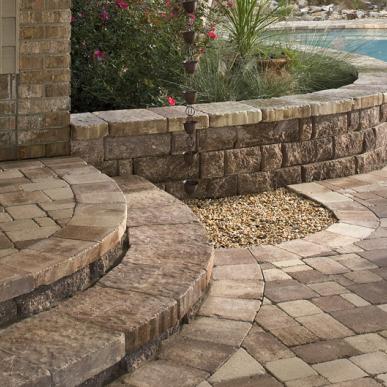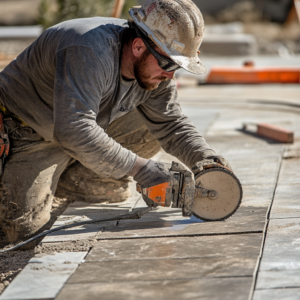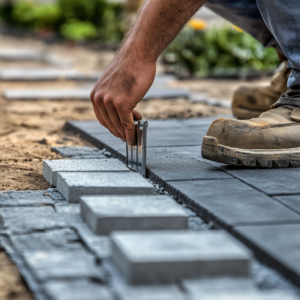If you want to upgrade your yard, a retaining wall is a very nice solution for projects like garden beds and tree rings. The main point of retaining walls is to hold the soil behind them, but, of course, the needs will differ from each project.
Many people want to build a retaining wall by themselves, without considering factors such as choosing the best block for your project, the weight of a retaining wall block, and other important details that will impact installation.

Jump to:
How much does a retaining wall block weigh?
First, it’s important to say that there are many blocks for retaining walls, and for obvious reasons, the weight of the blocks will diverge. The average weight of a retaining wall block is around 53 lbs and, per pallet, the weight is around 2190 lbs.
As you can see, the blocks for a retaining wall are pretty heavy, because since they are holding on a lot of weight of the soil and water behind it, they have to be very strong.
And due to them being heavy, installing them can be tiring because you will need to move and stack all the blocks.
How to choose the best type of blocks for my retaining wall?
The to-go choice when it comes to retaining walls is concrete blocks. They are suitable for a lot of projects and available in a wide variety of styles, colors, and shapes. It’s also important to mention that they are durable and eco-friendly, which is even better.
Check out some of the types of concrete blocks for retaining walls:
Full-size wall block
Full-size is the most common option. They are large and heavy blocks, making them perfect for retaining walls that need to hold on a lot of weight. To install them you need professionals since they are cumbersome and hard to handle.
Three-way split block
The three-way block has the corners split off, which gives it a rounded surface and makes it a very good option if your retaining wall has a lot of tight curves.
Flat-face block
Like the name says, this type of block presents an even and flat surface compared with regular concrete blocks. When stacked, they have the classical look of chiseled stone. They come in a variety of sizes, which can be a good option for many projects.
Tumbled or weathered block
This is a type of flat face block. Its edges are bowed to make the appearance more natural. Different length blocks can be mixed to further vary the look, custom-fitted to the wall. This type of block works better for straight walls.
Besides all the options above, there are other materials that you can choose to build your retaining wall, like natural stones and bricks.
Choosing the best option depends a lot on your project, but it is not an easy job. So leave the planning and work for professionals. They will know exactly what to do, what materials are the best for your project, which brands and types of blocks are available, and what is the most cost-effective option.
Can I build a retaining wall alone?
You can, but it requires so much work and attention that it’s just not worth it. Building and installing a retaining wall requires way more than just piling all the blocks in a row. If you’re gonna build on by yourself, you need to be attentive to not only do the job properly but also do it in a way that prevents soil erosion and floods.
When you do it by yourself, you might cut some expenses. Still, you will take way more time than a professional would, and, of course, there is always the chance of something going wrong during or after the installation. So, by far, the best option here is to hire professionals to do the job for you.
JS Brick is a company that specializes in the supply and installation of pavers. Whatever you need, we’ve got your back. If you live near Sarasota and Manatee, call us right now for a free estimate for your retaining wall and other projects!



